20 Different Types of Apple Trees (With Pictures)
-
Ed Malaker
- Last updated:
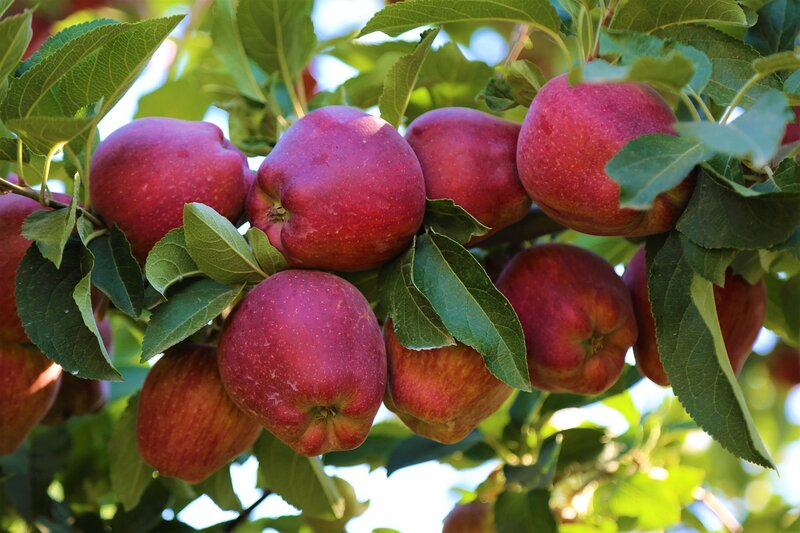
If you are thinking about getting an apple tree for your yard, you probably have many questions, including what type you should choose among the variety of options. The answer will depend largely on where you live, but luckily, most zones will allow you a few choices so you can find something perfect for your property. Keep reading while we show you several different species you can grow separated by zones so you can make an informed purchase.
Things to Consider Before Buying an Apple Tree
Zones
Zones describe the growing habitat in the United States. We recommend consulting a zone map before choosing plants for your property because it will tell you which plants will most likely thrive there. You might also hear people calling them plant hardiness zones, growing zones, and planting zones. These zones have a number from 1–13 that describes how cold the winter is in that area. Lower numbers are cooler, and higher numbers are warmer. You can find zones 1–11 in the United States, and most plants will grow only in specific zones, so it’s important to learn about your area before choosing your apple trees or any other plants. Several maps found online will make it easy to know your zone.
Crop Yield
While some apple trees can pollinate themselves, most will produce more fruit if they cross-pollinate with different types of apple trees that are blooming at the same time. Apple trees in the same or adjacent zones will cross-pollinate and yield a better crop.
Chill Hours
Chill hours are very similar to the zones we just mentioned. It uses research that suggests different apple trees and other plants require a specific amount of time each year in temperatures below 45 degrees. Some only require a few hundred hours, while others require more than 2,000. When choosing an apple tree for your yard, it’s important to learn about the number of chill hours in your area. While it can vary considerably, from year to year, several maps will help get you started with reliable estimations.
The 20 Different Types Of Apple Trees
Many trees can grow in a variety of zones, and we separated them into groups from coldest to warmest based on where you are more likely to find them. For example, Early Harvest Trees can grow in zones 7 and 8, but you are much more likely to find them in the cooler zones 1 and 2, so we put them in that group.
1. Crabapple Trees

The first type of apple we want to look at is the crabapple tree, which is the only type of apple tree native to the United States. The primary difference between a crabapple and regular apple trees is the size of the apples. Crabapples are typically 2 inches or less in diameter, while a ripe apple will be larger. The crabapple’s size also makes it quite sour tasting. While you are unlikely to want to grow a crabapple tree in your yard because it doesn’t produce attractive apples, they can be handy to have nearby because they can cross-pollinate your apples to get a better crop.
Flowering Group 1 – Zone 2
2. Early Harvest
Zones: 3-8
As the name suggests, Early Harvest apples are usually the first to produce edible apples each season. They do well if you cross-pollinate them with white-flowering crabapples, and the trees don’t get too large. Instead, they typically stay between 20–25 feet tall. The trees grow quickly and enjoy moist soil. The apples are usually yellow and keep for several weeks.
3. Gravenstein
Zones: 2-9
The Gravenstein apple is a hardy tree that can withstand harsh conditions. It tends to produce popular apples for cider and baking because the apples tend to be slightly sour. They can also ripen unevenly, so you must pick Gravenstein apples frequently. These trees are a little smaller than the Early Harvest, and they only grow to 15–20 feet tall.
Flowering Group 2 – Zone 3
4. Lodi
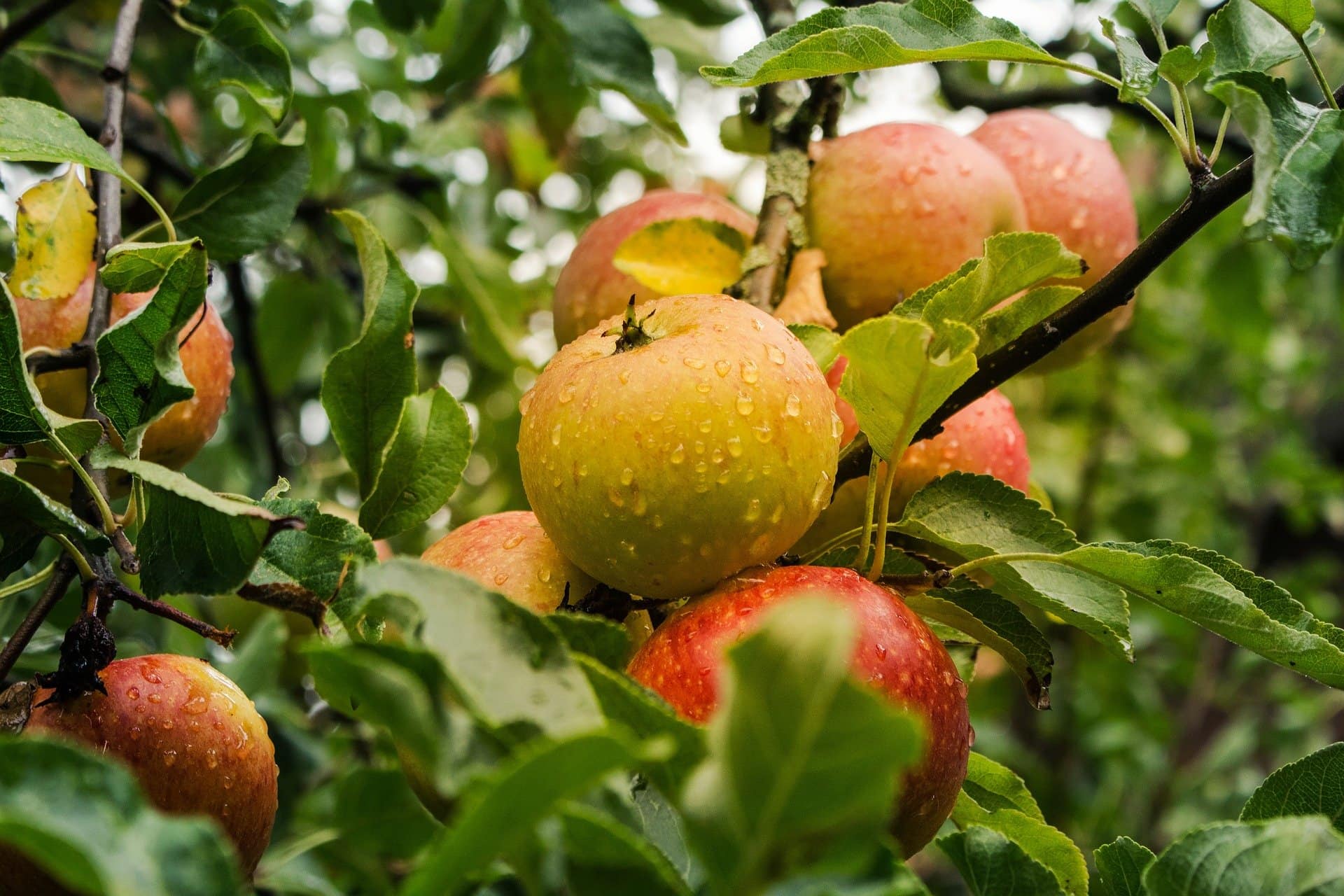
Zones: 3-8
Lodi apples are typically a pale green and covered with tiny pores that give them a slightly dimpled appearance. It’s a crunchy fruit that starts sour and turns sweet as you chew. Cooks usually use them for baking and sauce, and the trees can be anywhere from 10–25 feet tall. It’s a fast-growing tree that cross-pollinates well with trees from the lower zones.
5. McIntosh
Zones: 4-7
Mcintosh apples are the national apple of Canada, but they also grow well in many parts of the United States. The skin of these apples is usually bright red with areas of green or white. It’s a crunchy and tart-tasting apple that is perfect for eating raw or cooking, making it one of the 10 best-selling varieties in America. McIntoshTrees usually grow 15–20 feet tall, and they are quite hardy.
Flowering Group 3 – Zone 4
6. Arkansas Black
Zones: 4-8
Arkansas Black apples are dark red to purple and have waxy skin. They are aromatic, and it’s one of the few varieties where the apples taste better after you store them away, and they will stay good for up to 4 months. Arkansas Black apple trees usually grow from 12–16 feet tall and produce a large harvest of apples.
7. Fuji
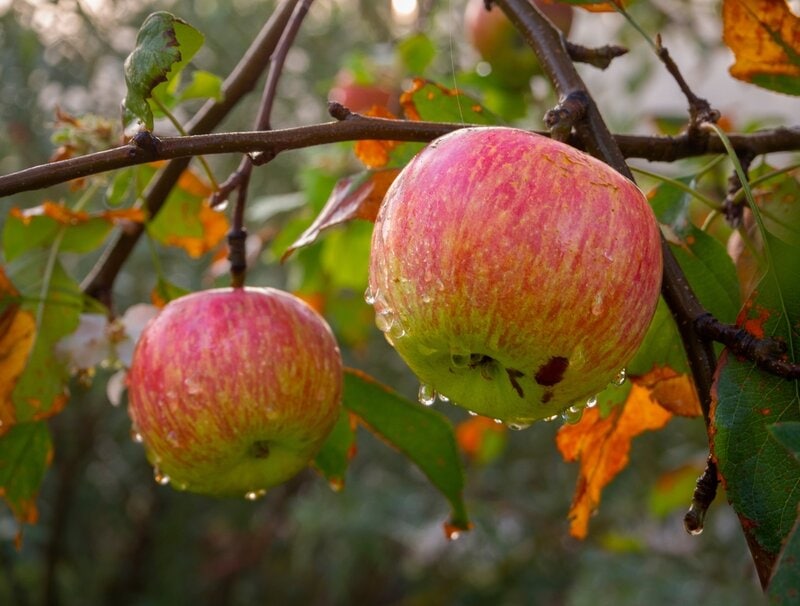
Zones 6-9
Fuji apples are round and slightly crooked and have thick waxy skin that can exhibit a range of colors. These are popular baking apples because the dense fruit and skin hold up well to the high temperatures, and you will also find them in many salads. These trees grow to 10–15 feet tall and require constant watering because they do not handle drought well.
8. Granny Smith
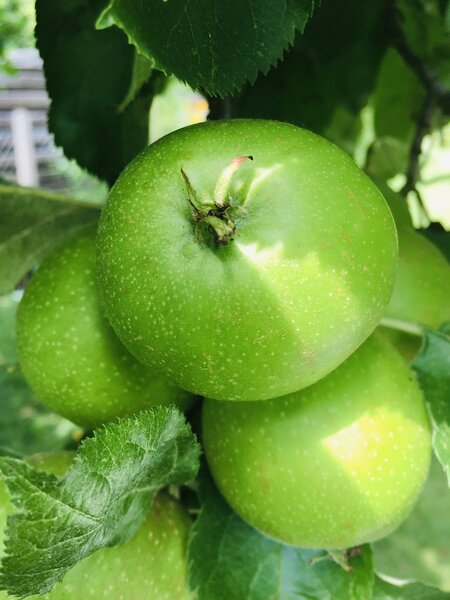
Zones: 6-9
Granny Smiths are one of the most popular apples globally, and they are a major Australian export. The apples are large, green, and crunchy with a sour taste that is perfect for cooking and eating right from the tree. It requires warm temperatures during the day and at night, so it may be challenging to grow in many areas of the United States.
9. Jonagold
Zones: 5-8
The Jonagold apple first became available in the 1950s, and it’s still a popular variety today. They produce large green and yellow crunchy apples with plenty of red coloring. Cornell’s apple breeding program made them sweet and tart with a long shelf life of 10 months or more if you keep them in the refrigerator. Jonagold trees usually grow to between 12 and 15 feet tall.
10. Macoun
Zones: 4-7
Macouns are a highly sought-after eating apple that tastes great right off the tree. It’s an extremely popular variety that you can find in almost any orchid in the New England part of the United States. It’s a hard, crisp apple with a boxy shape. Macoun trees usually grow to between 10 and 15 feet tall, and they like deep, well-drained soil.
11. Pink Lady
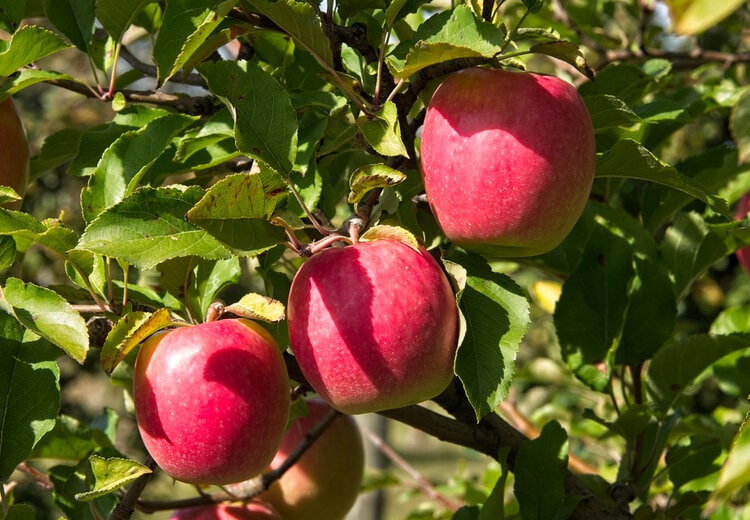
Zones: 6-9
Pink Lady apples are another popular apple in the United States due to their attractive appearance. They start off quite sour, so most farmers recommend storing the apples for at least a month after picking to help them taste a little better. These are hardy trees that can handle environments other apple trees can’t.
12. Red Jonathan
Zones: 4-8
The Red Jonathan apple tree is a late bloomer. The apples are crisp and juicy with a balanced taste, and the apples can be stored in a refrigerator for 3–6 months. These trees require plenty of pollination to ensure a good harvest, so most owners recommend planting other varieties nearby. These trees grow from 12–20 feet tall.
13. Wealthy
Zones: 4-7
The Wealthy apple is an attractive red apple that was one of the first varieties to grow in Minnesota, so it became quite popular in that area. The apples are tasty with an almost strawberry taste, and the trees are usually 12–15 feet tall. It has a long bloom period, and the fruit falls from the tree when ripe.
Flowing Group 4 – Zone 5
14. Empire
Zones: 4-9
Empire apples are round but can have an uneven appearance. The skin is tough and chewy, and the flavor is sweet with a tart aftertaste. Empire apples are extremely attractive and will improve the appearance of any landscape, and the trees usually grow no taller than about 15 feet.
15. Gala
Zones: 5-8
Gala apples are yellow with red highlights. It has a sweet taste and aroma that many people enjoy. You can usually get them year-round because it’s a popular variety that grows in North and South America. It’s a self-pollinating tree, but it will produce more fruit if you cross-pollinate it with other breeds, and it usually stands 12–16 feet tall.
16. Honey Crisp
Zones: 3-7
The Honey Crisp apple is the state fruit of Minnesota, and it’s one of the most popular kinds of apples in the world. It’s a sweet and juicy apple that fetches a high price and is easy to grow, making it a perfect choice for small orchards across the United States. The apples can store for up to 7 months in the fridge, and the trees grow to about 15 feet tall.
17. Red Delicious
Zones: 5-8
The Red Delicious is another one of the most popular apple varieties in the United States that you might have already gathered from its name. It’s a bright red apple that is easy to sell at a premium, and it looks great on the store shelf. However, while hydrating, there is not much flavor to these apples, and most people describe them as tasting like a ripe melon.
18. Stayman Winesap
Zones: 5-8
Stayman Winesap apples are a sweet and tart apple that we have eaten in America since the pioneers arrived. It’s important to plant these near other varieties that can help pollinate your tree to yield a larger crop. It’s a slow-growing tree that prefers acidic soil and stands 20–25 feet tall.
Flowering Group 5 – Zone 6
19. Northern Spy
Zones: 3-7
The Northern Spy apple is native to the northern United States east coast from New York up. It’s a great winter variety that’s hardy against colder temperatures but also enjoys high heat. It requires plenty of trimming to keep It looking nice and usually stands about 25 feet tall.
See Also: 20 Types of Trees in New York (With Pictures)
20. Red Rome
Zones: 4-8
The Red Rome or just Rome apple is a cooking and baking apple that grows well in the warmer climates of the southern United States. It’s a self-pollinating tree, so it can live independently but will produce more fruit if you place other varieties nearby. The standard tree grows to about 20 feet, and there are several smaller dwarf varieties if you need something smaller.
Conclusion
The type of apple tree that you get for your orchard will primarily depend on your zone. We recommend checking the map of zones, as well as chill hours, so you can select a tree that will grow well in your area. You may also want to purchase more than one variety if there are no other apple trees nearby to ensure you get plenty of apples each year.
Looking for more types of trees? Check out:
- 13 Different Types of Willow Trees
- 11 Different Types of Spruce Trees
- 10 Different Types of Elm Trees
Featured Image Credit: Wounds_and_Crack, Pixabay
Contents

